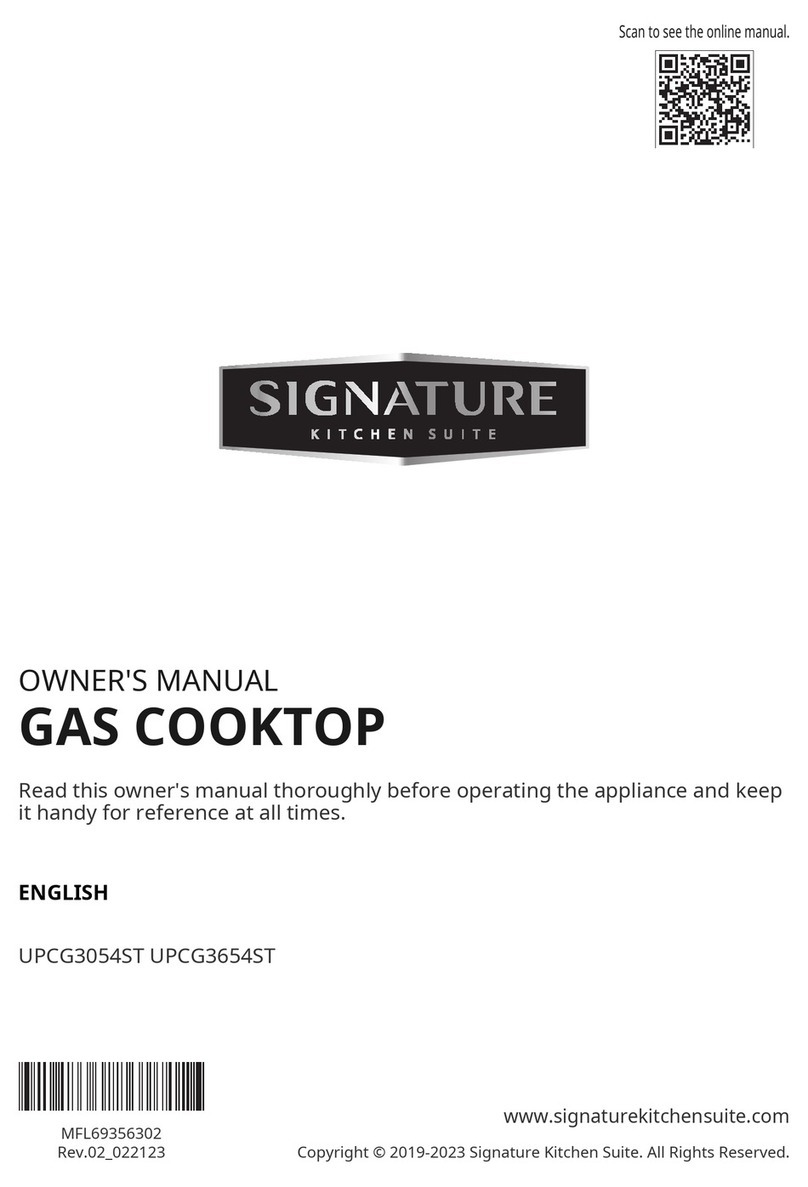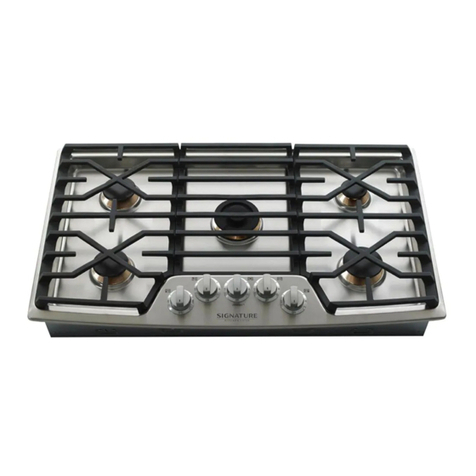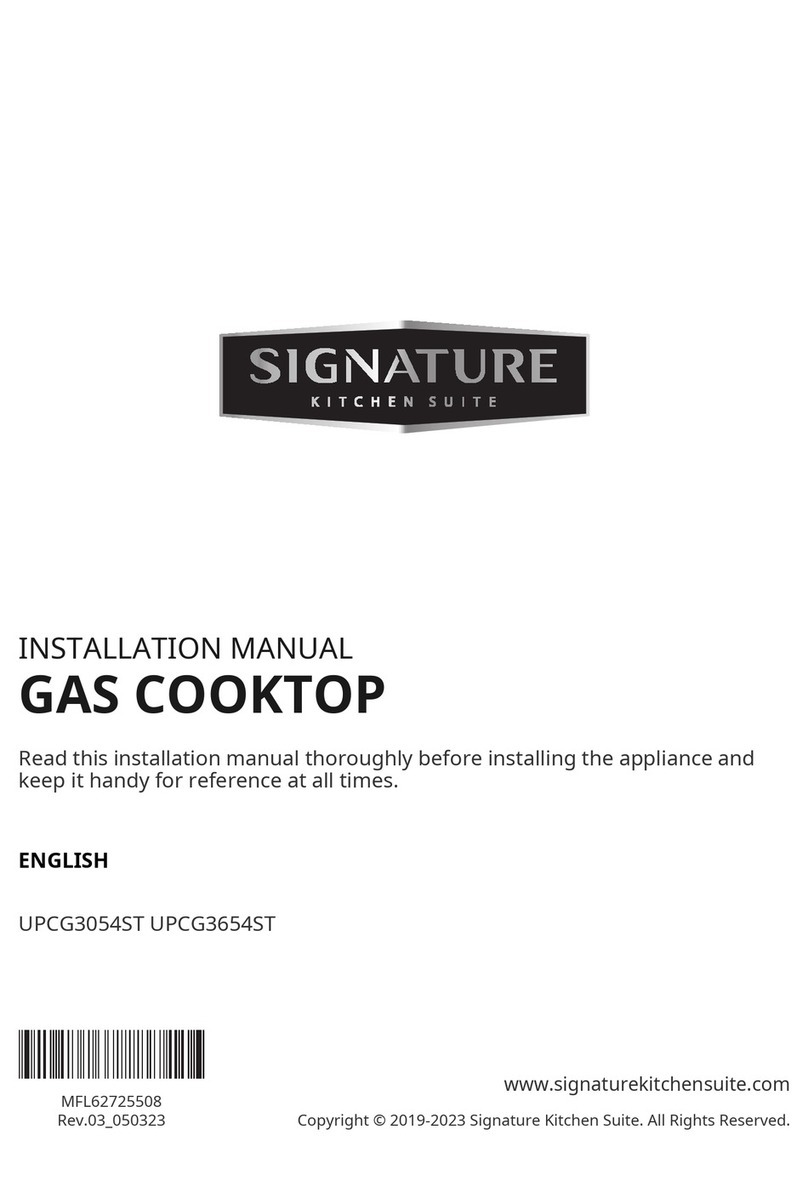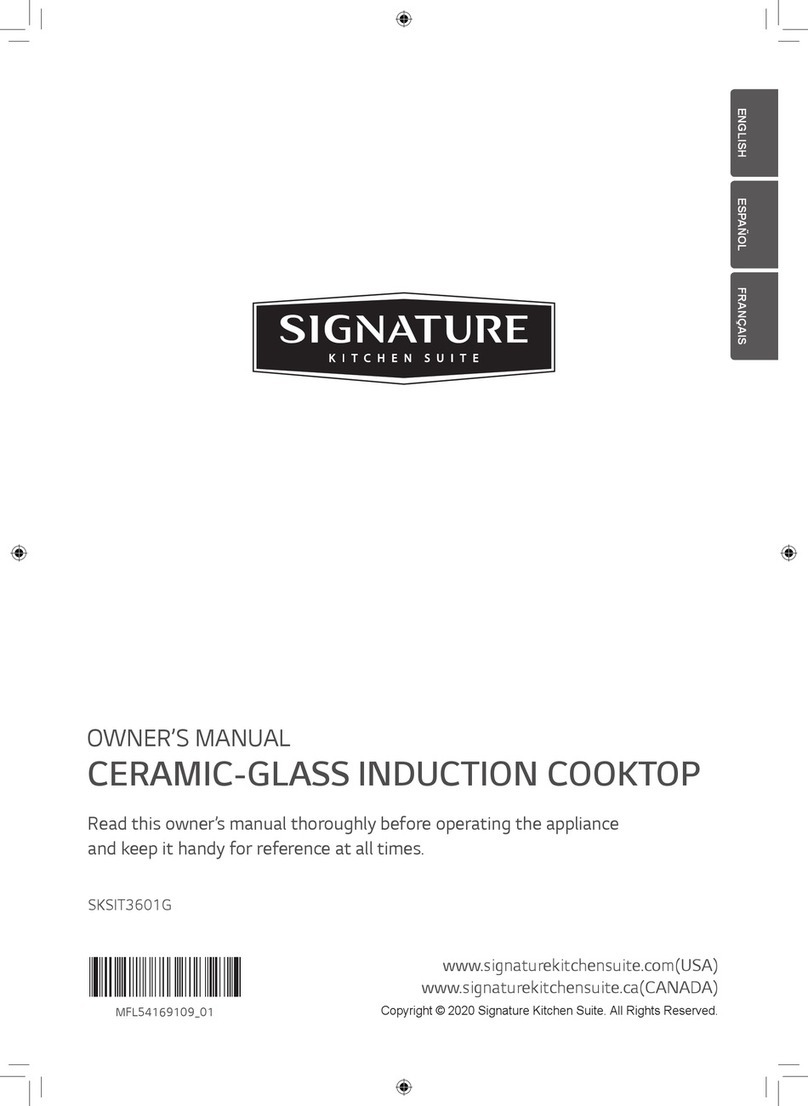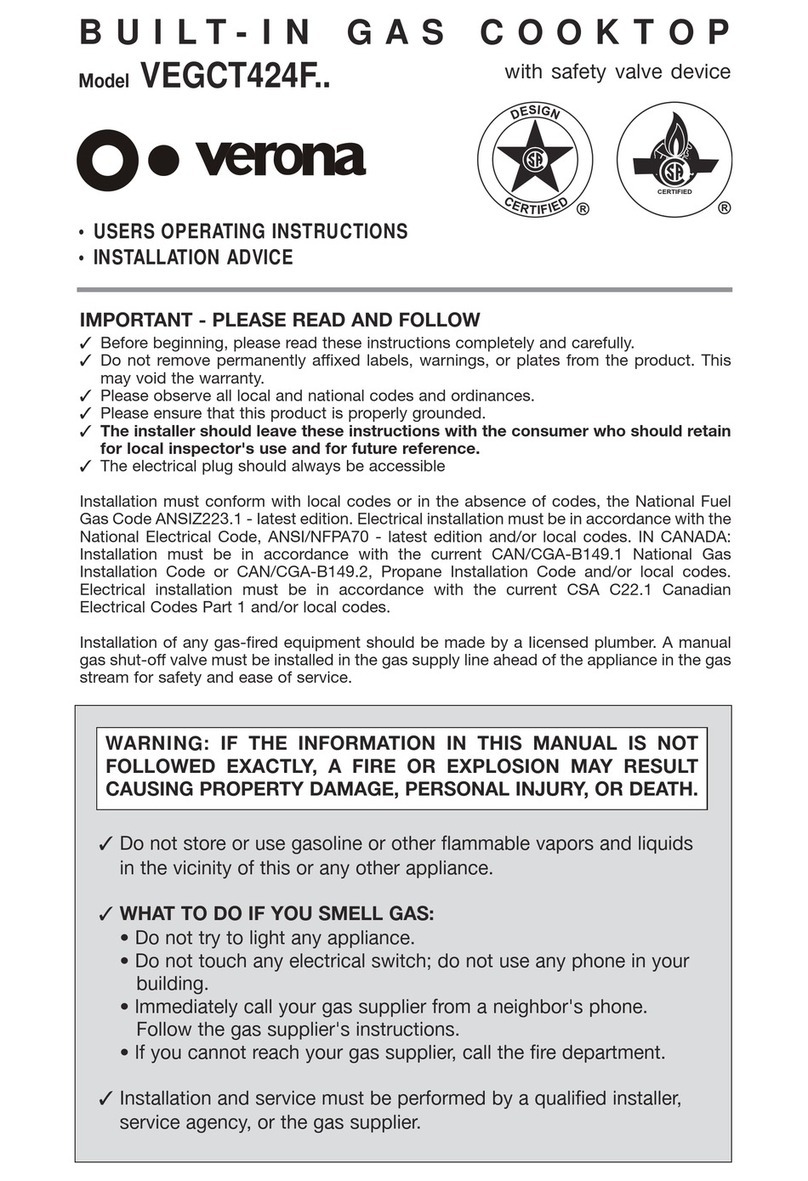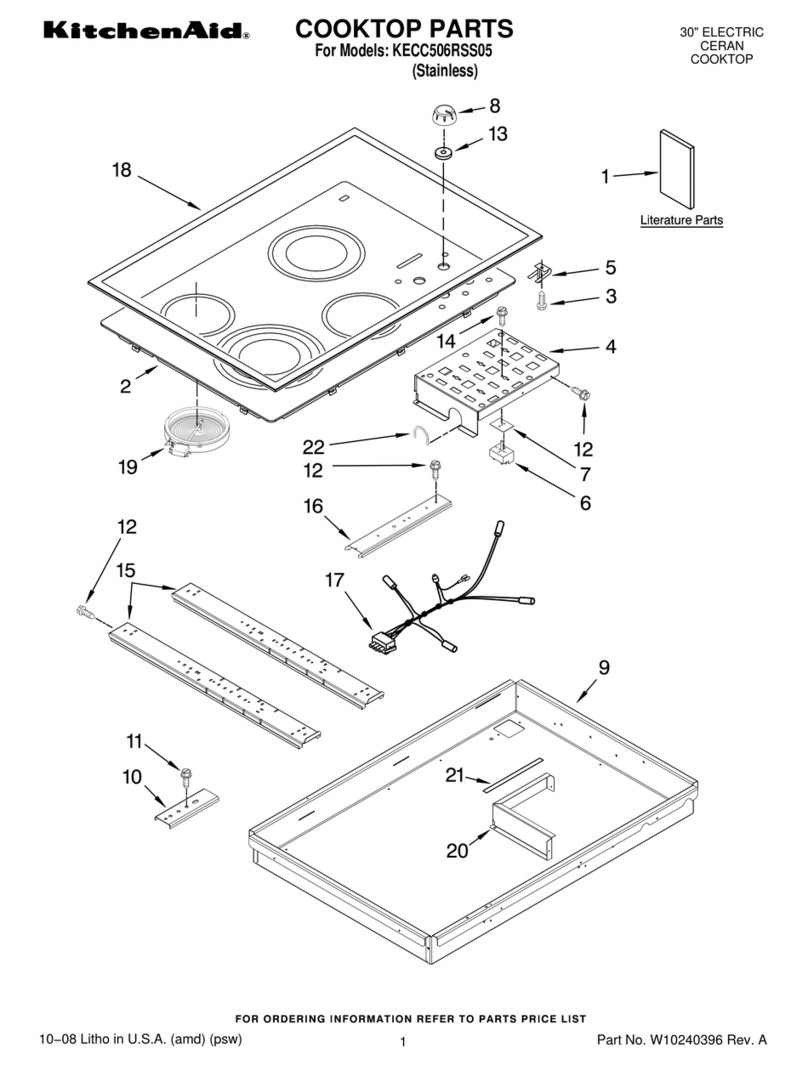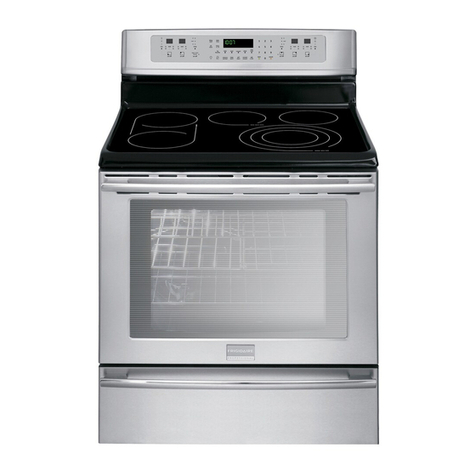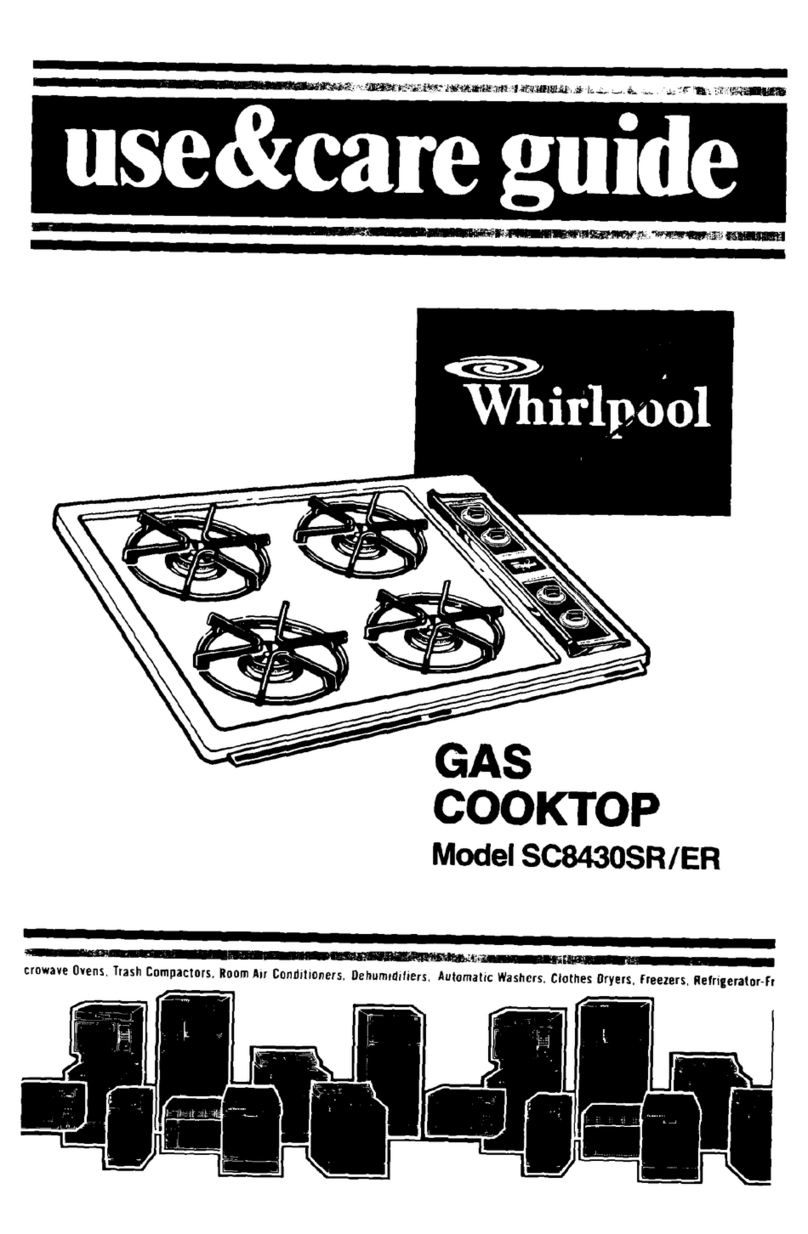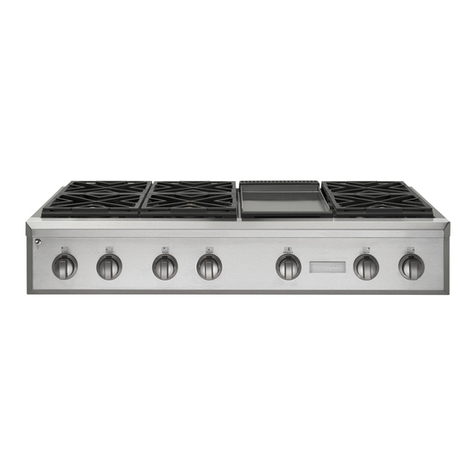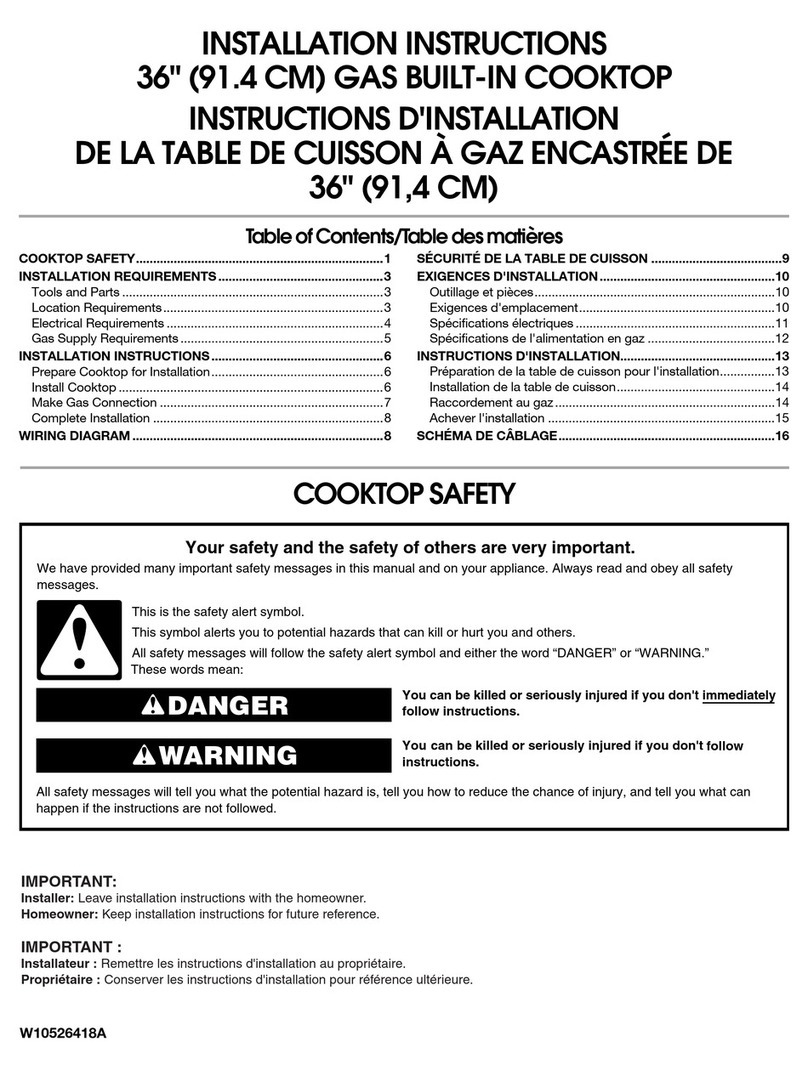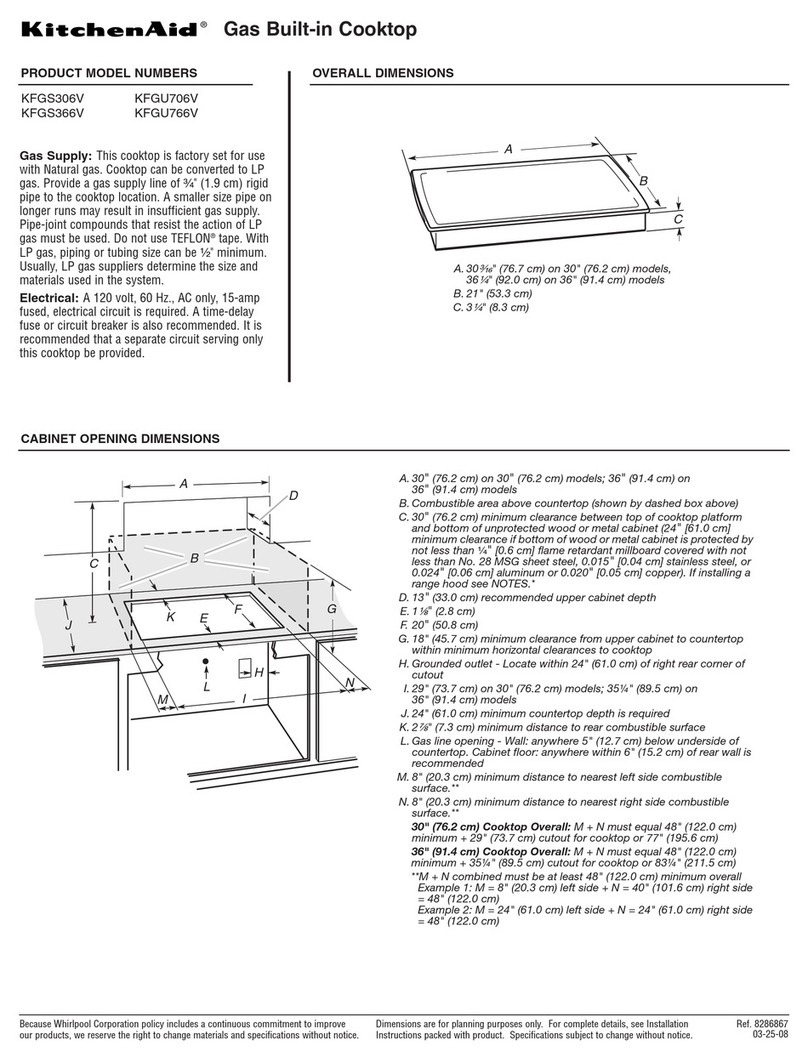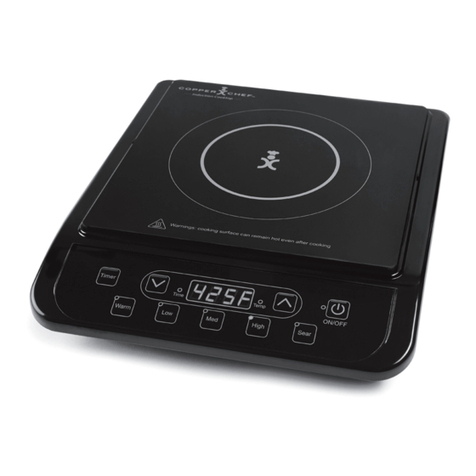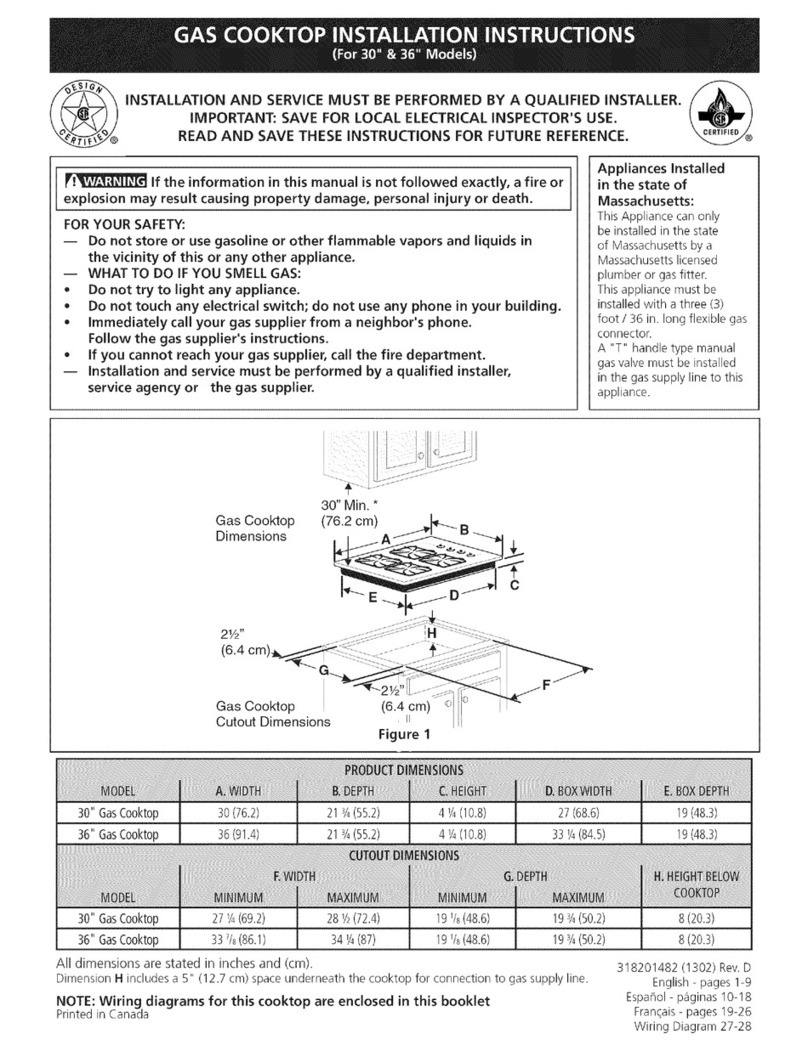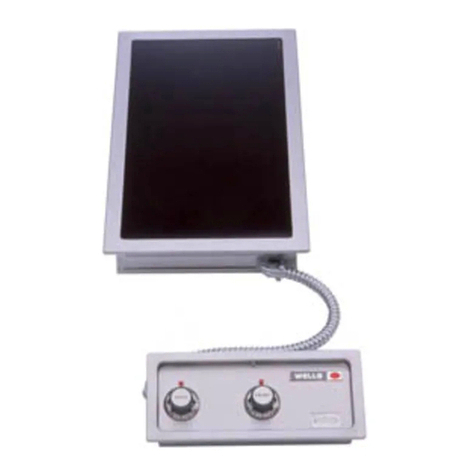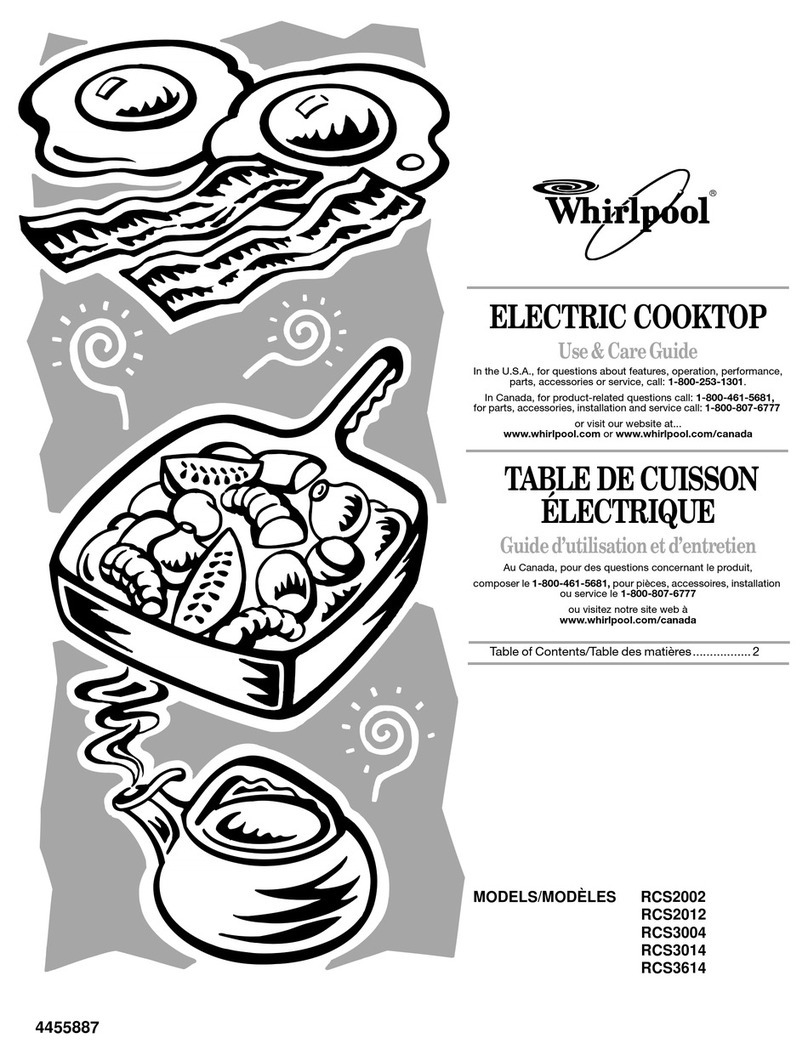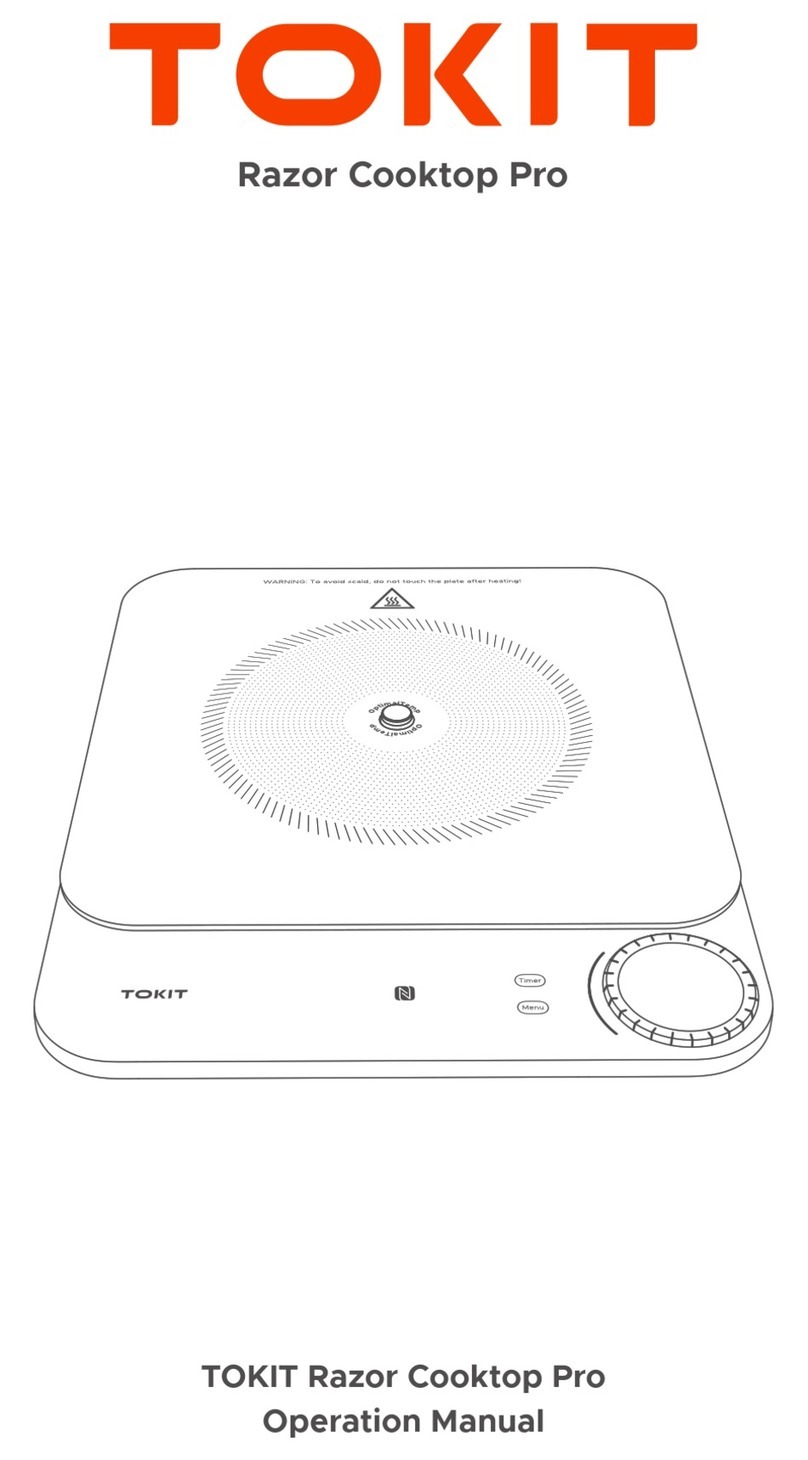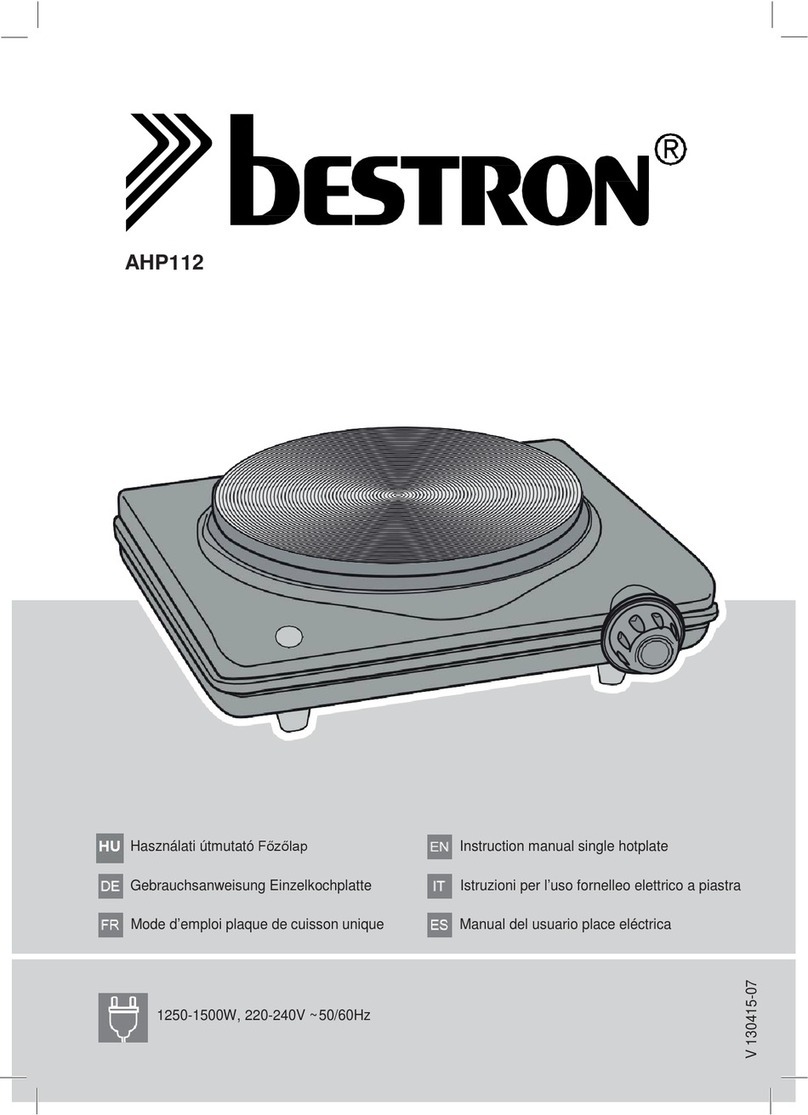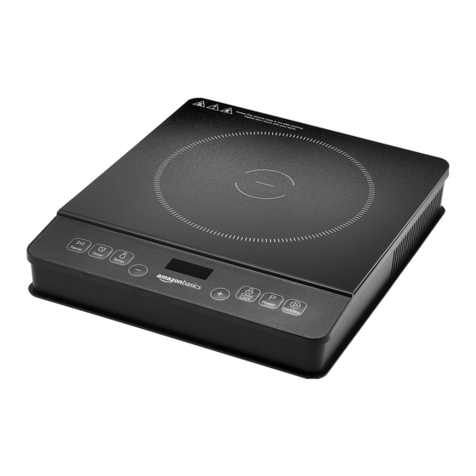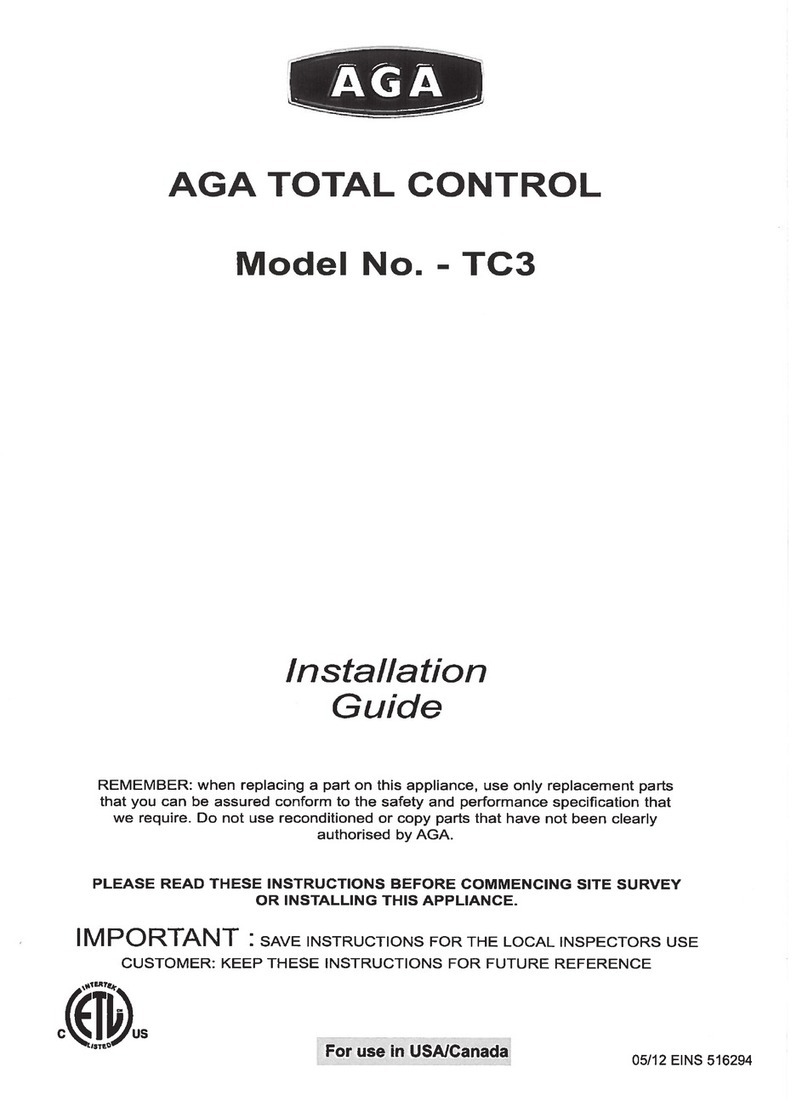9
INTRODUCTION TO INDUCTION COOKING
INTRODUCTION TO
INDUCTION COOKING
How Induction Cooking Works
An induction coil beneath
the ceramic glass cooking
surface generates magnetic
fields, which act directly on
the base of the pots and
pans.
Instead of heating the ceramic glass, this method
heats the base of the pan immediately, saving time
and energy. Since the heat required for cooking is
generated directly in the base of the pan, the cooking
zone itself warms up only slightly. The cooktop
does become hot when heat is transferred from the
cookware.
NOTE
If there is no pot or pan on the cooking zone,
there is no energy transfer and the surface
remains cool. This prevents the cooking zones
from being switched on accidentally.
IMPORTANT
•Remove all tape and packaging wrap before using
the appliance. Destroy the carton and plastic bags
after unpacking the appliance. Never allow children
to play with packaging materials.
•Electromagnetic fields can affect electronic circuits
and interfere with portable radios and phones.
•Do not put magnetically active objects (e.g., credit
cards, computer diskettes, cassettes) on or near
the ceramic glass surface while one or more
induction cooking zones are in use.
•Do not put any metallic objects (e.g., spoons, pan
lids) on the cooking zones as they can become hot
when the cooking zones are in use.
Selecting Cookware
The magnetic cooking zone sensors located below
the cooktop surface require the use of cookware
made with magnetic material in order to start the
heating process on any of the cooking zone.
When purchasing pans, look for cookware specifically
labeled by the manufacturer for use with induction
cooktops.
Pots and Pans
•In principle, all pots and pans with magnetic bases
are suitable. These include steel, enameled steel,
as well as cast-iron pots and pans.
•High grade steel pans with a mixed metal base
(sandwich base, e.g. Tefal®with an aluminum/
copper base) are suitable for induction only if the
manufacturer has expressly marked them as such.
In that case they have a magnetic material in the
base.
•If you wish to use a special type of pan (e.g., a
pressure cooker, simmering pan, wok), please
follow the manufacturer’s instructions and do not
use a very thin pan.
NOTE
Some cookware can produce noises when used
on induction cooking zones. This is not a fault in
the cooktop, and its function will not be impaired
in any way as a result.
Suitability Test
If you are not sure if a pot or pan is suitable for use
with your induction cooktop, you can find out with a
few simple tests:
•Place a pot filled with a little water (1/8ʺ–1/4ʺ) on
the cooking zone. Set the cooking zone to full
power (power level 9). If the pan is suitable, the
base should heat up within a few seconds and the
water should rapidly boil.
•You can also check
cookware suitability with
a magnet. If the magnet
remains fixed to the
base of the pan, the pan
is suitable for induction
cooking.
CAUTION
Keep an eye on cookware to avoid burns or
boilovers. Cookware will heat within seconds, and
water will come to a boil very rapidly.




















